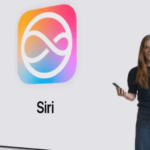The way we work has changed dramatically in recent years, with many companies opting for video interviews to assess candidates for remote or in-office roles. Whether it’s your first video interview or you’re looking to improve your performance, mastering the virtual interview process is key to standing out.
Here’s a complete guide to help you prepare, nail the technical aspects, and communicate effectively during your next video interview.

1. Preparation: The Key to Success
Like any interview, preparation is crucial. Here’s how to ensure you’re ready for your video interview.
Research the Company and Role: Before the interview, understand the company’s mission, culture, and values. Tailor your responses to highlight how your skills and experience align with the company’s goals.
Review the Job Description: Make sure you are familiar with the job requirements. Have examples ready that demonstrate your expertise in those areas.
Practice Common Interview Questions: Rehearse answers to common questions such as:
- Tell me about yourself.
- Why do you want to work here?
- What are your strengths and weaknesses?
Prepare Your Questions for the Interviewer: Have 3-4 thoughtful questions ready to ask the interviewer. This shows you’re engaged and interested in the role.
2. Setting Up the Right Environment
Your surroundings play a major role in how professional you appear. A well-prepared environment helps you focus and leaves a positive impression.
Choose a Quiet Location: Find a quiet, well-lit area with minimal distractions. Inform those around you about the interview to avoid interruptions.
Lighting: Ensure that the light is in front of you, not behind you. Natural light is ideal, but soft artificial light will also work. Avoid harsh overhead lighting.
Background: Choose a clean, neutral background. A clutter-free or simple wall works best, as it keeps the focus on you. If you’re using a virtual background, make sure it’s subtle and professional.
Camera Angle: Position your camera at eye level. Avoid looking down or up, as it can make you appear disinterested or disconnected.
Dress Professionally: Even though you’re at home, dress as if you’re attending an in-person interview. Wear professional attire, keeping in mind that solid colors are preferable over patterns that can distract.
Feature Snippet: Quick Video Interview Tips
“Prepare thoroughly, ensure a clean and quiet space, dress professionally, and maintain good eye contact to ace your next virtual interview.”
3. Technical Setup: Avoid Common Pitfalls
A smooth technical setup is essential for success. Here’s how to ensure everything works seamlessly on the big day.
Test Your Technology:
- Internet Connection: Ensure your Wi-Fi is stable. If possible, connect directly to your router with an Ethernet cable to avoid connection drops.
- Video Platform: Whether it’s Zoom, Skype, or another platform, test the app ahead of time. Make sure you know how to use its features, like muting yourself and sharing screens.
- Camera & Microphone: Test your camera and microphone before the interview. Ensure your microphone is clear and that your camera is positioned correctly.
Update Your Software: Make sure your device’s operating system and the interview platform are up to date. This will avoid technical glitches and delays.
Have Backup Plans:
- Backup Device: If possible, have a backup device ready (another laptop or your phone) in case technical issues arise.
- Hotspot: In case of internet failure, have your phone set up as a backup hotspot.
4. Communicating Effectively on Video Calls
Video interviews often feel different from in-person interviews, but the basics of communication remain the same. Here are some best practices to ensure effective communication.
Maintain Eye Contact: Look at the camera, not the screen, when speaking. This simulates eye contact and helps you appear engaged.
Speak Clearly and at a Moderate Pace: Since there might be slight delays in the video feed, speak clearly and at a moderate pace. This ensures the interviewer understands your responses without confusion.
Use Hand Gestures (Sparingly): While it’s important to use body language to appear engaged, avoid excessive hand gestures that may look distracting or out of place on video.
Practice Active Listening: Nod and smile to show you’re engaged with what the interviewer is saying. This creates a natural flow of conversation.
Listicle: Top Video Interview Tips
- Test your internet and camera before the interview.
- Choose a quiet, well-lit space.
- Dress professionally from head to toe.
- Maintain eye contact by looking at the camera.
- Speak clearly and at a steady pace.
- Avoid distractions and background noise.
- Have a backup device and internet connection ready.
- Keep your answers concise and relevant.
- Use positive body language to convey confidence.
- Follow up with a thank-you email after the interview.
5. Handling Interview Anxiety
Video interviews can be nerve-wracking, but managing anxiety will help you perform better.
Prepare and Practice: The more prepared you are, the more confident you’ll feel. Practice your responses with a friend or family member and ask for feedback.
Mindfulness and Breathing Techniques: Take a few deep breaths before the interview to calm your nerves. Practicing mindfulness techniques can help you stay grounded during the interview.
Stay Positive: Remember that the interviewer wants you to succeed. If you make a mistake, stay calm and move forward—everyone makes mistakes.
6. Post-Interview Etiquette: What to Do Next
Once your video interview is over, there are still important steps to take.
Follow Up with a Thank-You Email: Send a thank-you email within 24 hours of the interview. Express gratitude for the opportunity, reiterate your interest in the role, and highlight a key point from the interview.
Conclusion
Video interviews are a crucial part of the hiring process, especially in today’s remote work environment. With the right preparation, technical setup, and communication strategies, you can ace your video interview and stand out as a top candidate.
Frequently Asked Questions (FAQs)
1. How should I prepare for a video interview?
Preparation involves researching the company, practicing common interview questions, and testing your tech setup. Additionally, ensure that your environment is quiet, and your background is professional.
2. What should I wear for a video interview?
Dress professionally as if you were attending an in-person interview. Opt for solid colors and avoid distracting patterns.
3. How do I deal with technical issues during a video interview?
Have a backup device and internet connection ready. Test your camera and microphone ahead of time, and remain calm if something goes wrong.
4. Can I use a virtual background for my video interview?
While virtual backgrounds are okay, ensure they are professional and not distracting. If possible, opt for a neutral physical background instead.
5. What should I do if I feel nervous during the interview?
Practice relaxation techniques such as deep breathing and mindfulness. Stay positive, focus on your answers, and remember that the interviewer is rooting for your success.
6. Should I look at the camera or the screen during a video interview?
Look directly at the camera when speaking to simulate eye contact. This helps you appear more engaged and professional.
7. How do I follow up after a video interview?
Send a thank-you email within 24 hours of the interview. Express your appreciation, highlight key points, and reaffirm your interest in the role.
8. How can I ensure my video interview runs smoothly?
Test all your equipment, choose a quiet location, and ensure that your internet connection is stable. Arrive early to avoid technical issues.
9. What should I do if I accidentally interrupt the interviewer?
Apologize briefly and let the interviewer finish their point. Continue with your answer and maintain a calm demeanor.
10. Is it okay to take notes during a video interview?
It’s perfectly fine to take notes during the interview, but make sure it doesn’t interfere with maintaining eye contact. Take notes in a way that feels natural.













